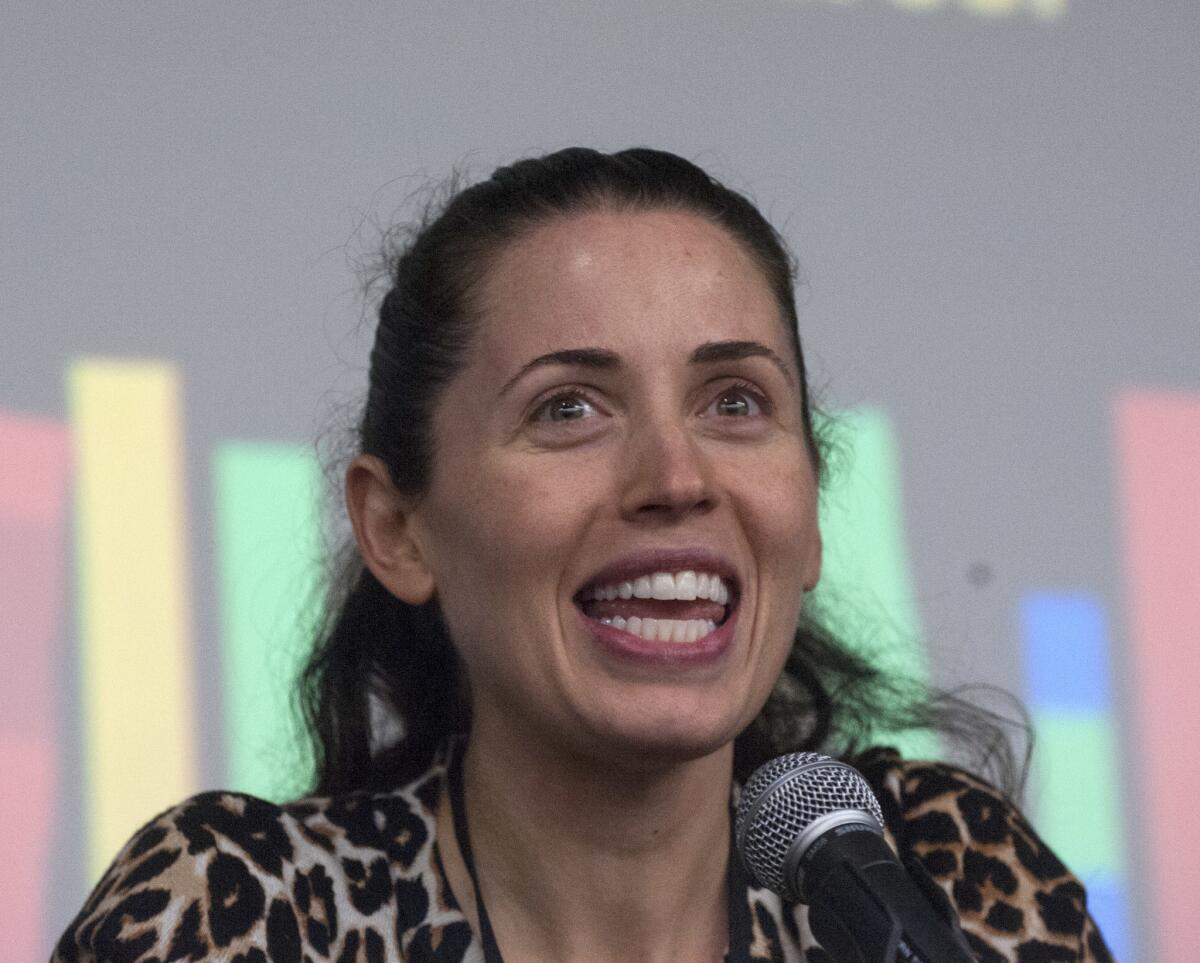Lili Anolik, David Kipen, and Lynell George share the people and places that shaped L.A.

- Share via
Early Saturday morning at the Los Angeles Times Festival of Books, Lynell George, author of “After/Image: Los Angeles Outside the Frame,” made a proclamation: “Angelenos give directions using places that don’t exist anymore.”
Her fellow panelists in “Los Angeles: The People and Places That Shape a City,” were interested in not looking at L.A. as a “city of angels” but as a “city of ghosts,” one defined by its vestigial presences and haunting absences.
The panel focused on this fragmented, unfixed, chaotic city featuring various voices from our town. There was David Kipen from the Boyle Heights lending library, Libros Schmibros, whose collection of historical and contemporary diary entries and letter excerpts from and about L.A., “Dear Los Angeles,” came out late last year. Lili Anolik’s exquisite “Hollywood’s Eve” has helped renew interest in one of the city’s most interesting women, Eve Babitz. Tosh Berman’s memoir “Tosh” looks back at his life, growing up in his artist father Wallace Berman’s creative and idiosyncratic world.
Moderator William Deverell asked panelists to talk about what year or era acted as the fulcrum for their view of Los Angeles. George talked glowingly about the 1970s of her youth. The books of both Anolik and Berman focus heavily on that period as well, so that decade became the default temporal center of the panel, until Kipen gave his surprising answer: 1935. He explained that in that year the Griffith Observatory erected its telescope to aim, like a cannon, into the heavens, and the city also began pumping in electricity from the Hoover Dam, which effectively caused a boom in Los Angeles, conversely beginning the process of light pollution that would make seeing stars from our city increasingly difficult.
But Kipen also admitted, in crowd-pleasing fashion: “L.A. has a fulcrum every year.” In a way, this is what the panel was really about: that every day and every year and in every corner of this city, things are happening that affect and change the whole. But is there actually a “whole”? Berman answered the final question of the panel by saying, “To me Los Angeles is not a whole.” Unlike most cities, L.A. is a series of small villages, ever-growing, ever-changing — a puzzle whose pieces may never be arranged in the right order, a puzzle which may be more beautiful with its pieces spread in curious, chaotic disarray.
How better to begin a festival of books in Los Angeles than to look at how writing, old and new, has helped us attempt to shape, define, and capture this ever-unknown and ever-unknowable city?
More to Read
Sign up for our Book Club newsletter
Get the latest news, events and more from the Los Angeles Times Book Club, and help us get L.A. reading and talking.
You may occasionally receive promotional content from the Los Angeles Times.








